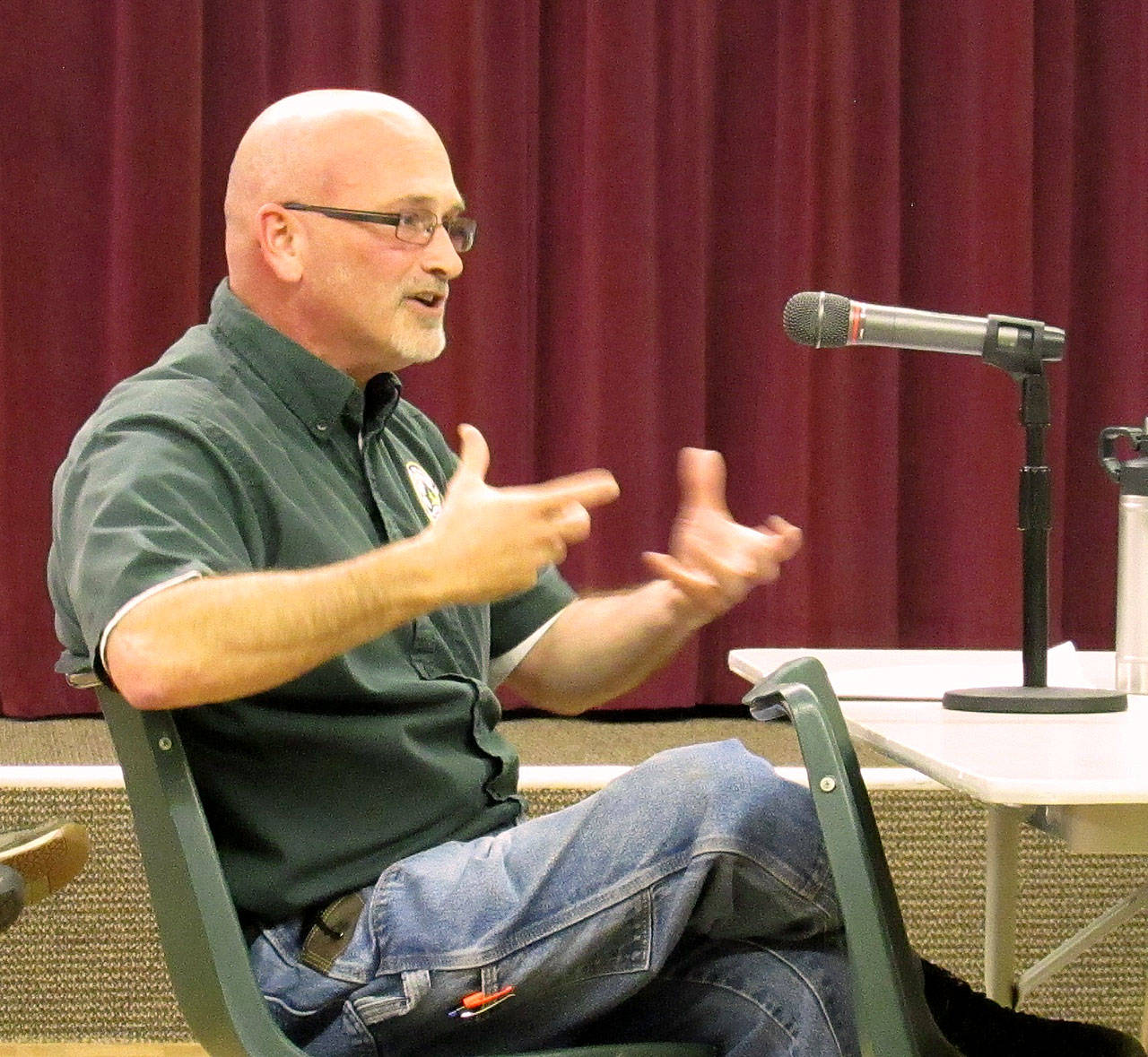By Scott D. Johnston
Feeding the deer has been a hot topic in Ocean Shores lately, and a wildlife conflict specialist and biologist from the Washington Department of Fish and Wildlife (WDFW) presented his agency’s view in a talk at the Ocean Shores City Council meeting Oct. 23.
“Many people are surprised to find that WDFW does not recommend wildlife feeding of any kind by the public,” said Scott Harris, who has worked in Grays Harbor County and surrounding areas for more than 12 years, operating out of the agency’s Montesano office. “Wildlife feeding threatens humans, our pets and wildlife, he said, adding, “the general consensus among wildlife biologists is you just say no to wildlife.”
He described two broad problems relative to feeding the deer in the area: habituation and concentration. When habituation (basically deer becoming accustomed to interaction with humans) reaches higher levels, “things can go wrong,” he said, with deer becoming “food conditioned (and) losing their fear of humans.” Feeding artificially increases the “carrying capacity” of an area, which concentrates the population. No hunting and the lack of natural predators seems to have enhanced that concentration.
Both factors contribute to the result we humans observe most, more car-deer collisions. But Harris also said, “Deer can become aggressive; they start to associate people with food, deer can and will attack humans, and the likelihood of this happening increases with habituation.”
Harris said he is “not aware of any attacks against humans in Ocean Shores, but it’s not a matter of if, it’s a matter of when.” Concentration also aids in the spread of disease. He said sooner or later, the concentration of deer here will result in a significant, disease-fueled die-off. The problem is complicated, he explained, partly because of the complex digestive system of deer. A frequently fatal disease, rumen acidosis, can be caused simply by ingesting large quantities of fermentable carbohydrates, like the favorite deer foods offered by local folks, grains and apples. That can bring in death in 72 hours or less.
Harris said human-wildlife interaction “is a huge topic now” in peer-reviewed journals.
While he offered no specific recommendations for managing the situation, Harris referenced a large collection of research and reporting on communities that have tried to deal with large deer populations. He said Cornell University in Ithaca, NY, and The Nature Conservancy have worked together on research that has yielded concepts for “Community-Based Deer Management.” The Community Deer Advisor website says “CBDM is a guided process for addressing deer-related problems. … The process is flexible, helping communities adapt their deer management plan as needs change over time.”
Information can be found at www.deeradvisor.dnr.cornell.edu.



